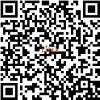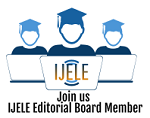(2) * Mochamad Imron Azami
(3) Fitri Awaliyatush Sholihah
(4) Mohammad Badrih
*corresponding author
AbstractThis study investigated the influence of the learning process, human resources, and infrastructure on the pre-service teachers' competencies, particularly their pedagogical competence as future professional teachers. This study employed survey research, a type of quantitative investigation. The study's population consisted of all 182 Pre-Service Teachers from the Indonesian Language and Literature Education Department, Mathematics, and English Education Department of the Teacher Professional Education Program, Faculty of Teacher Training and Education, Universitas Islam Malang. Primary and secondary data were the two data types used in this investigation: questionnaires and documentation. The main source of information was the assessment of the lecture process in Batches 1 and 2 of the Pre-Service Teacher of Teacher Professional Education Program. The course grades from LMS courses taken by pre-service PPG students made up the secondary data. Based on the results and discussion, it can be concluded that the learning process and human resources positively influenced the pre-service teacher's competence, especially in the pre-service teacher professional education program. Meanwhile, the data showed that academic infrastructure did not impact pre-service teacher competence.
KeywordsPre-service teacher competence; Learning process; Human resource; Academic infrastructure
|
DOIhttps://doi.org/10.31763/ijele.v6i1.1325 |
Article metrics10.31763/ijele.v6i1.1325 Abstract views : 1092 | PDF views : 287 |
Cite |
Full Text Download Download
|
References
[1] P. Pannen, “Pedoman Penyelenggaraan Pendidikan Profesi Guru,†Jakarta: Direktorat Jenderal Pembelajaran dan Kemahasiswaan Kementerian Riset, Teknologi, dan Pendidikan Tinggi. 2017.
[2] F. N. Arifa and U. S. Prayitno, “Peningkatan Kualitas Pendidikan: Program Pendidikan Profesi Guru Prajabatan dalam Pemenuhan Kebutuhan Guru Profesional di Indonesia,†J. Aspir., vol. 10, no. 1, pp. 1–17, Jun. 2019, doi: 10.22212/aspirasi.v10i1.1229.
[3] E. Triwinarni, “Evaluasi program pendidikan profesi guru (PPG) pendidikan agama islam di UIN Sunan Kalijaga Yogyakarta,†in Prosiding Interdisciplinary Postgraduate Student Conference, 2017, pp. 219–223.
[4] H. Zulfitri, N. P. Setiawati, and I. Ismaini, “Pendidikan profesi guru (PPG) sebagai upaya meningkatkan profesionalisme guru,†Ling. J. Bhs. dan Sastra, vol. 19, no. 2, pp. 130–136, 2019.
[5] H. A. Sa’Diyah, “Pendidikan Profesi Guru (PPG) Sebagai Upaya Peningkatan Profesional Guru,†Seri Publ. Pembelajaran, vol. 1, no. 1, pp. 1–12, 2023. doi: 10.31219/osf.io/a2t8q
[6] Indahyani, S. Syamsuddhuha, and M. Musdalifah, “Pengaruh Manajemen Sumber Daya Manusia dan Manajemen Prasarana terhadap Mutu Pendidikan,†Nazzama J. Manag. Educ., vol. 1, no. 2, pp. 135–146, Mar. 2022, doi: 10.24252/jme.v1i2.28011.
[7] I. Suraji, “Urgensi kompetensi guru,†in Forum Tarbiyah, 2012, vol. 10, no. 2, pp. 236–251.
[8] N. Nuriyah, “Evaluasi pembelajaran: sebuah kajian teori,†Edueksos J. Pendidik. Sos. Ekon., vol. 3, no. 1, pp. 73–86, 2016.
[9] M. O. Pandjaitan, “Penilaian Berbasis Kelas dengan Portfolio,†A Seminar paper presented at Indonesia University of Education. 2003.
[10] Idrus L, “Evaluasi dalam proses pembelajaran,†Adaara J. Manaj. Pendidik. Islam, vol. 9, no. 2, pp. 920–935, Aug. 2019, doi: 10.35673/ajmpi.v9i2.427.
[11] M. Arifin, Mengelola Sekolah Berbasis Entrepreneurship. Jogyakarta: Ar-Ruzzmedia, 2016.
[12] S. Sahyar, “Pengaruh Kompetensi Dosen dan Proses Pembelajaran terhadap Kepuasan Mahasiswa,†J. Pendidik. Ekon. dan Bisnis, vol. 1, no. 03, pp. 133–139, 2009.
[13] E. Porter Michael, Competitive advantage: creating and sustaining superior performance. The Free Press of Glencoe, 1985.
[14] C. O. Longenecker and S. S. Ariss, “Creating competitive advantage through effective management education,†J. Manag. Dev., vol. 21, no. 9, pp. 640–654, Nov. 2002, doi: 10.1108/02621710210441649.
[15] M. Isnaini, D. K. Wardani, and L. Noviani, “Pengaruh kompetensi dosen dan fasilitas belajar terhadap kepuasan mahasiswa pendidikan ekonomi fkip uns,†J. Pendidik. Bisnis Dan Ekon., vol. 1, no. 2, 2016.
[16] C. S. Long, Z. Ibrahim, and T. O. Kowang, “An Analysis on the Relationship between Lecturers’ Competencies and Students’ Satisfaction,†Int. Educ. Stud., vol. 7, no. 1, pp. 37–46, Dec. 2013, doi: 10.5539/ies.v7n1p37.
[17] E. Mulyasa, Manajemen berbasis sekolah: konsep, strategi dan implementasi. Bandung: Remaja Rosdakarya, 2004.
[18] R. N. Fadila, E. A. Lutfiani, I. S. R, N. Veronika, D. Rachmanto, and N. Arfinanti, “Efektivitas pengelolaan sumber daya sekolah dalam meningkatkan mutu pendidikan,†J. Akuntabilitas Manaj. Pendidik., vol. 8, no. 1, pp. 81–88, Aug. 2020, doi: 10.21831/jamp.v8i1.28997.
[19] R. Ariyani, “Manajemen sarana dan prasarana dalam meningkatkan mutu pendidikan di SLB Buah Hati kota Jambi,†Al-Afkar Manaj. Pendidik. Islam, vol. 6, no. 2, pp. 109–132, Sep. 2018, doi: 10.32520/afkar.v6i2.239.
[20] J. Cresswell, “Educational research : planning, conducting, and evaluating quantitative and qualitative research.†Educational Research, pp. 1–12, 2012.
[21] J. Henseler, “Partial least squares path modeling: Quo vadis?,†Qual. Quant., vol. 52, no. 1, pp. 1–8, Jan. 2018, doi: 10.1007/s11135-018-0689-6.
[22] C. Demetriou, B. U. Ozer, and C. A. Essau, “Selfâ€Report Questionnaires,†in The Encyclopedia of Clinical Psychology, Wiley, 2015, pp. 1–6. doi: 10.1002/9781118625392.wbecp507
[23] J. W. Cresswell, Penelitian Kualitatif dan Desain Riset: memilih diantara lima pendekatan. Yogyakarta: Pustaka Pelajar, 2015.
[24] D. GTK, Pedoman Penjaminan Mutu PPG. Jakarta, 2022.
[25] J. F. Hair, J. J. Risher, M. Sarstedt, and C. M. Ringle, “When to use and how to report the results of PLS-SEM,†Eur. Bus. Rev., vol. 31, no. 1, pp. 2–24, Jan. 2019, doi: 10.1108/EBR-11-2018-0203.
[26] A. Muhson, “Analisis Statistik Dengan SmartPLS: Path Analysis, Confirmatory Factor Analysis, & Structural Equation Modeling.†nd, 2022.
[27] S. Yamin, Olah data Statistik SMARTPLS 3 SMARTPLS 4 AMOS & STATA (Mudah & Praktis) Edisi III. Dewangga Energi Internasional Publishing, 2023.
[28] J. F. Hair, G. T. M. Hult, C. M. Ringle, M. Sarstedt, N. P. Danks, and S. Ray, Partial Least Squares Structural Equation Modeling (PLS-SEM) Using R. Cham: Springer International Publishing, 2021. doi: 10.1007/978-3-030-80519-7
[29] M. Ghasemy, V. Teeroovengadum, J.-M. Becker, and C. M. Ringle, “This fast car can move faster: a review of PLS-SEM application in higher education research,†High. Educ., vol. 80, no. 6, pp. 1121–1152, Dec. 2020, doi: 10.1007/s10734-020-00534-1.
[30] W. W. Chin, “The partial least squares approach to structural equation modeling,†Mod. methods Bus. Res., vol. 295, no. 2, pp. 295–336, 1998.
[31] G. Franke and M. Sarstedt, “Heuristics versus statistics in discriminant validity testing: a comparison of four procedures,†Internet Res., vol. 29, no. 3, pp. 430–447, Jun. 2019, doi: 10.1108/IntR-12-2017-0515.
[32] S. Ogbeibu, C. J. C. Jabbour, J. Gaskin, A. Senadjki, and M. Hughes, “Leveraging STARA competencies and green creativity to boost green organisational innovative evidence: A praxis for sustainable development,†Bus. Strateg. Environ., vol. 30, no. 5, pp. 2421–2440, 2021. doi: 10.1002/bse.2754
[33] K. Schermelleh-Engel, H. Moosbrugger, and H. Müller, “Evaluating the fit of structural equation models: Tests of significance and descriptive goodness-of-fit measures,†Methods Psychol. Res. online, vol. 8, no. 2, pp. 23–74, 2003.
[34] M. Sarstedt, P. Wilczynski, and T. C. Melewar, “Measuring reputation in global markets—A comparison of reputation measures’ convergent and criterion validities,†J. World Bus., vol. 48, no. 3, pp. 329–339, Jul. 2013, doi: 10.1016/j.jwb.2012.07.017.
[35] M. Wetzels, G. Odekerken-Schröder, and C. Van Oppen, “Using PLS path modeling for assessing hierarchical construct models: Guidelines and empirical illustration,†MIS quarterly. JSTOR, pp. 177–195, 2009. doi: 10.2307/20650284
[36] C. Alarioâ€Hoyos, E. Gómezâ€Sánchez, M. L. Boteâ€Lorenzo, J. I. Asensioâ€Pérez, G. Vegaâ€Gorgojo, and A. Ruizâ€Calleja, “From faceâ€toâ€face to distance LMSâ€mediated collaborative learning situations with GLUE!,†Comput. Appl. Eng. Educ., vol. 23, no. 4, pp. 527–536, Jul. 2015, doi: 10.1002/cae.21623.
[37] D. Basten and T. Haamann, “Approaches for Organizational Learning: A Literature Review,†SAGE Open, vol. 8, no. 3, p. 215824401879422, Apr. 2018, doi: 10.1177/2158244018794224.
[38] R. M. Ryan and E. L. Deci, “Self-determination theory and the facilitation of intrinsic motivation, social development, and well-being.,†Am. Psychol., vol. 55, no. 1, pp. 68–78, 2000, doi: 10.1037/0003-066X.55.1.68.
[39] F. N. Matin, Manajemen Sarana dan Prasarana Pendidikan Konsep dan Aplikasinya. Jakarta: PT Raja Grafindo Persada, 2016.
[40] H. M. Farmer and J. Ramsdale, “Teaching Competencies for the Online Environment | Enseigner les compétences pour l’environnement en ligne,†Can. J. Learn. Technol. / La Rev. Can. l’apprentissage la Technol., vol. 42, no. 3, Aug. 2016, doi: 10.21432/T2V32J.
[41] J. Musfah, Peningkatan kompetensi guru: Melalui pelatihan dan sumber belajar teori dan praktik. Jakarta: Kencana, 2012.
[42] L. Bardach and R. M. Klassen, “Smart teachers, successful students? A systematic review of the literature on teachers’ cognitive abilities and teacher effectiveness,†Educ. Res. Rev., vol. 30, p. 100312, Jun. 2020, doi: 10.1016/j.edurev.2020.100312.
[43] W. Musfiqon, Andiek, Pengembangan dan Media Sumber Pembelajaran. Jakarta: Raja Graffindo Persada, 2016.
[44] M. Yamin, Manajemen Mutu Kurikulum Pendidikan. Jakarta: Rajawali Pers, 2012.
[45] G. Odhiambo, “Elusive search for quality education,†Int. J. Educ. Manag., vol. 22, no. 5, pp. 417–431, Jun. 2008, doi: 10.1108/09513540810883159.
[46] C. Queen, “Applying Charismatic Leadership to Support Learner Engagement in Virtual Environments: Teaching and Learning in a Time of Crisis,†Pedagog. Heal. Promot., vol. 9, no. 3, pp. 158–160, Sep. 2023, doi: 10.1177/23733799221107613.
Refbacks
- There are currently no refbacks.
Copyright (c) 2024 Sunismi Sunismi, Mochamad Imron Azami, Fitri Awaliyatush Sholihah, Mohammad Badrih

This work is licensed under a Creative Commons Attribution-ShareAlike 4.0 International License.

International Journal of Education and Learning
ISSNÂ 2684-9240
Published by Association for Scientific Computing Electronics and Engineering (ASCEE)
W : http://pubs2.ascee.org/index.php/ijele
E : zalik@ascee.org

This work is licensed under a Creative Commons Attribution-ShareAlike 4.0 International License.






















